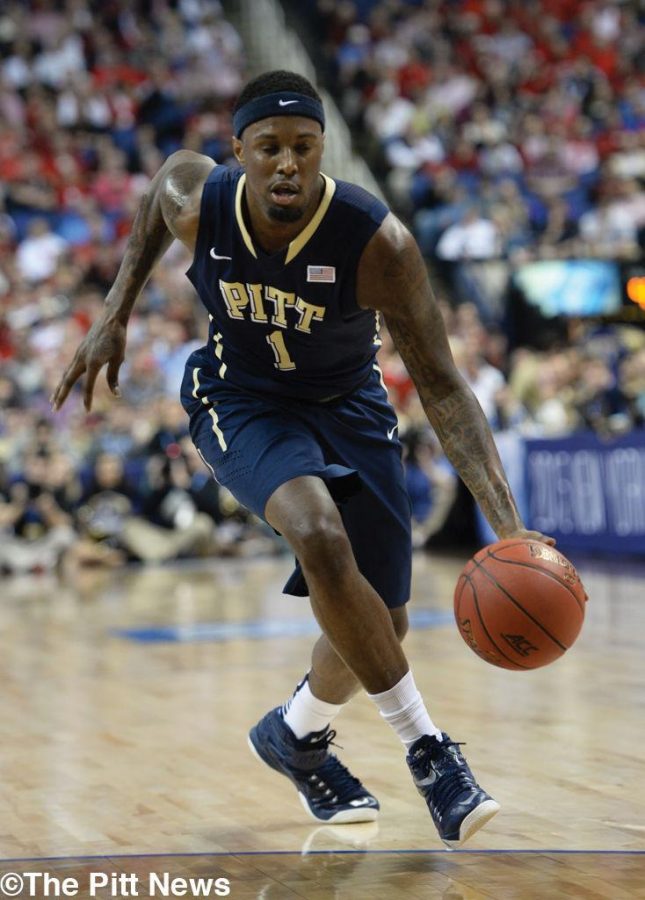Pitt’s disappointing end to season has team looking to future
March 17, 2015
After trailing in a two-possession game versus the University of Miami on March 4 for several minutes, sophomore forward Sheldon Jeter knocked down a shot from behind the arc to pull Pitt within three with less than 30 seconds left. Head coach Jamie Dixon called a timeout, and the Panthers lined up in a full-court press, resulting in a Jeter steal.
Suddenly, all the fans streaming out of the arena returned to their seats. We had hope.
A few passes later, the ball ended up in the hands of sophomore forward Jamel Artis, who had a wide open look for three from the wing. He shot the ball with 19 seconds left. Then, everyone in the Petersen Events Center held their collective breath, and … clank. Rebound Miami. Foul on Pitt. Free throws made. Game over.
It was the story of the season, really. When crunch time came, Pitt just couldn’t seal the deal in close games. The failures in closing minutes explains the loss to Virginia Tech. The same late-game shortcomings explain the lack of a solid out-of-conference win, and they explain the collapse when tournament hopes rode on wins against Wake Forest, Miami and Florida State. All of these factors add up to a disappointing 19-14 record, with a less-than-stellar 8-10 mark in ACC play, where Pitt finished ninth out of 15 teams.
Overall, the year disappointed fans, yet there are a number of bright spots to remember. For one, Pitt re-established the home-court dominance that it had lacked slightly in the past few years. Losses to Clemson and Miami hurt, but the Panthers defended their floor against ranked opponents like Notre Dame and North Carolina, as well as against rival Syracuse.
Artis and fellow sophomore forward Michael Young became a two-headed monster on offense, combining for more than 27 points per game. The development of Artis’ perimeter game (39.2 percent from three) made him the Panthers’ No. 1 option, and Young’s ability to work the post and offensive glass (3.3 offensive rebounds per game) made him crucial to Pitt’s success. In the seven games that Young scored in single digits, the team went just 1-6.
Junior point guard James Robinson’s role expanded from the previous two seasons, as well. Typically a passer, Robinson seemed less hesitant to take open shots. Teams had to respect his jumper, leading to more open driving lanes for everyone. Meanwhile, Robinson’s assist-to-turnover ratio remained an impressive 3.1-1.
This is a solid core on which to build. Pitt will also return a number of other role players. Only three graduate: Cameron Wright, a beloved four-year contributor and sparkplug; Aron Phillips-Nwankwo, a walk-on who contributed to the team greatly despite his limited playing time this season; and Derrick Randall, who, though seldom-used, Pitt will miss on the glass.
The ACC was as strong as it’s ever been this year, particularly with the caliber of teams near the top of the standing. Duke and Virginia are national championship-caliber squads, Notre Dame’s offense is one of the country’s best, and both North Carolina and Louisville are capable of just about anything when playing at full strength. Even Syracuse, which experienced a down year for its standards, still looked good at times.
But as Pitt fans, we’re accustomed to inconsistency. That’s why it doesn’t come as a surprise that the Panthers posted the same numbers of wins – four – against the bottom tier of the conference as they did against the elites. Still, it’s disappointing to see a talented team underachieve so grandly. Had the Panthers taken care of business at the end of their ACC slate, we would have a completely different conversation — one that includes the NCAA tournament.
But, alas, here we are, bound for the NIT.
Still, as a senior who experienced the groan-inducing 2011-2012 season, there is still a silver lining.
At least it’s not the CBI.








